Why Is My Hydrangea Turning Brown? 6 Common Causes & How To Solve Them To Save Shrubs From Disaster
Is your hydrangea turning brown suddenly? Those stunning blooms can take a hit out of nowhere. Let’s look at why and how to keep your shrubs lush and green.

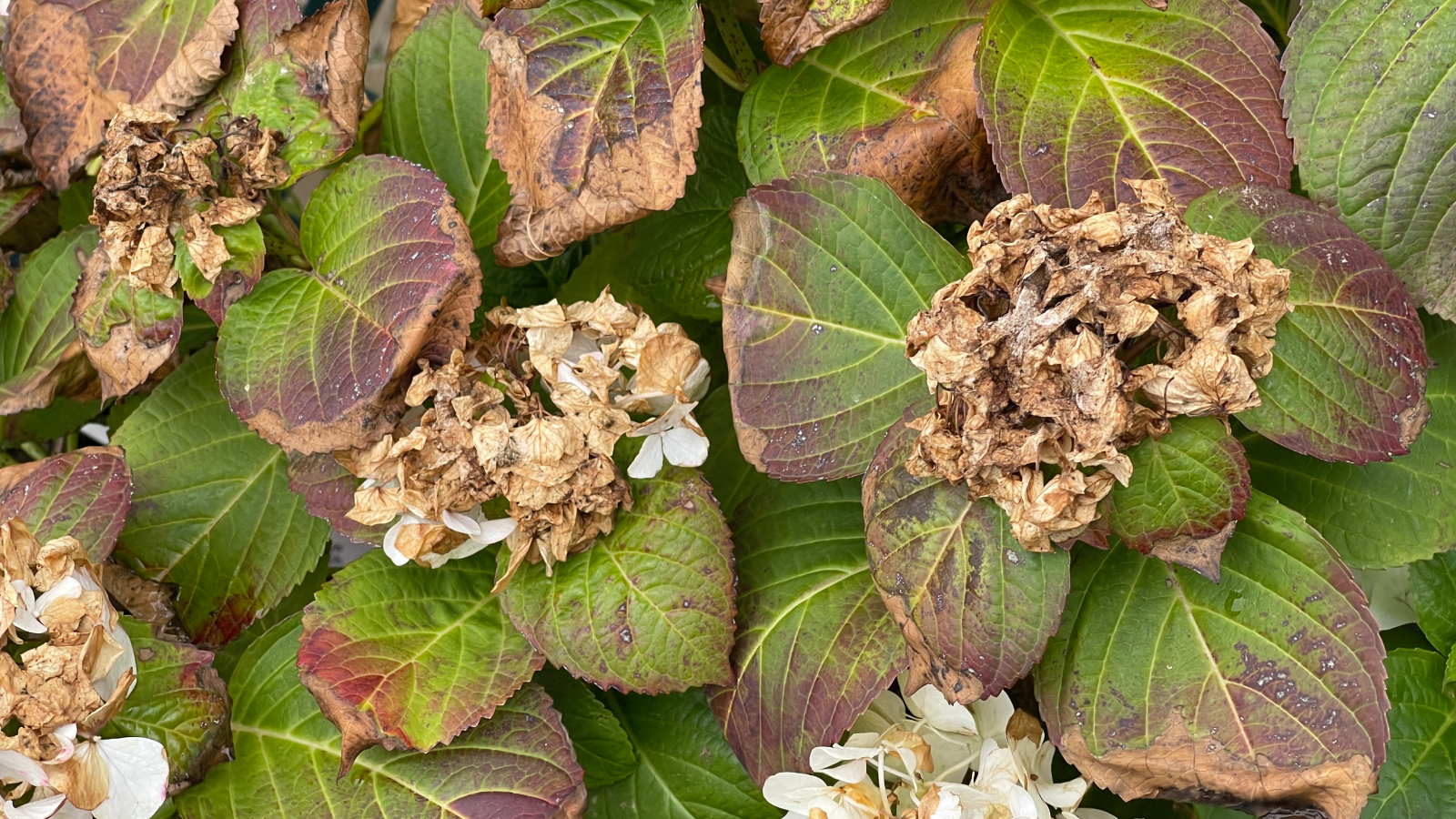
Hydrangeas are total showstoppers in the garden, but they’ve got their soft spots. They can be pretty touchy about water, sunlight, and even little critters, which can turn leaves or flowers brown before you know it.
Hydrangea diseases, pests, environmental issues, or even common hydrangea care mistakes may be the cause of browning shrubs. But no matter what the issue is, catching problems fast is the key. Once you identify the exact cause, you can save your plants and keep your garden growing strong.
I’ve watched brown and wilting hydrangeas come back to life with the right tweaks, so I’ve got your back with fixes for those stunning garden shrubs. Let’s jump in!
Why Is My Hydrangea Turning Brown?
Generally growing hydrangeas is problem-free, but sometimes shrubs can be a little more picky than you realize. Things like too much sun or a watering mistake can send leaves or flowers browning up quickly. Brown leaves is usually a sign something’s going wrong. But if you act fast, you can turn it around before it’s too late.
Some types take it harder than others. Mophead hydrangeas with their heavy flower heads hate baking in afternoon sun, while oakleaf hydrangeas struggle if their feet stay too wet.
The environment is a big factor in how well hydrangeas grow, especially during hot summer stretches or late growth spurts. Jump on issues early and you’ve got a shot at saving your shrub from a total meltdown. Here are the most commons reasons why your hydrangea is turning brown and how you can fix it.
1. Underwatering
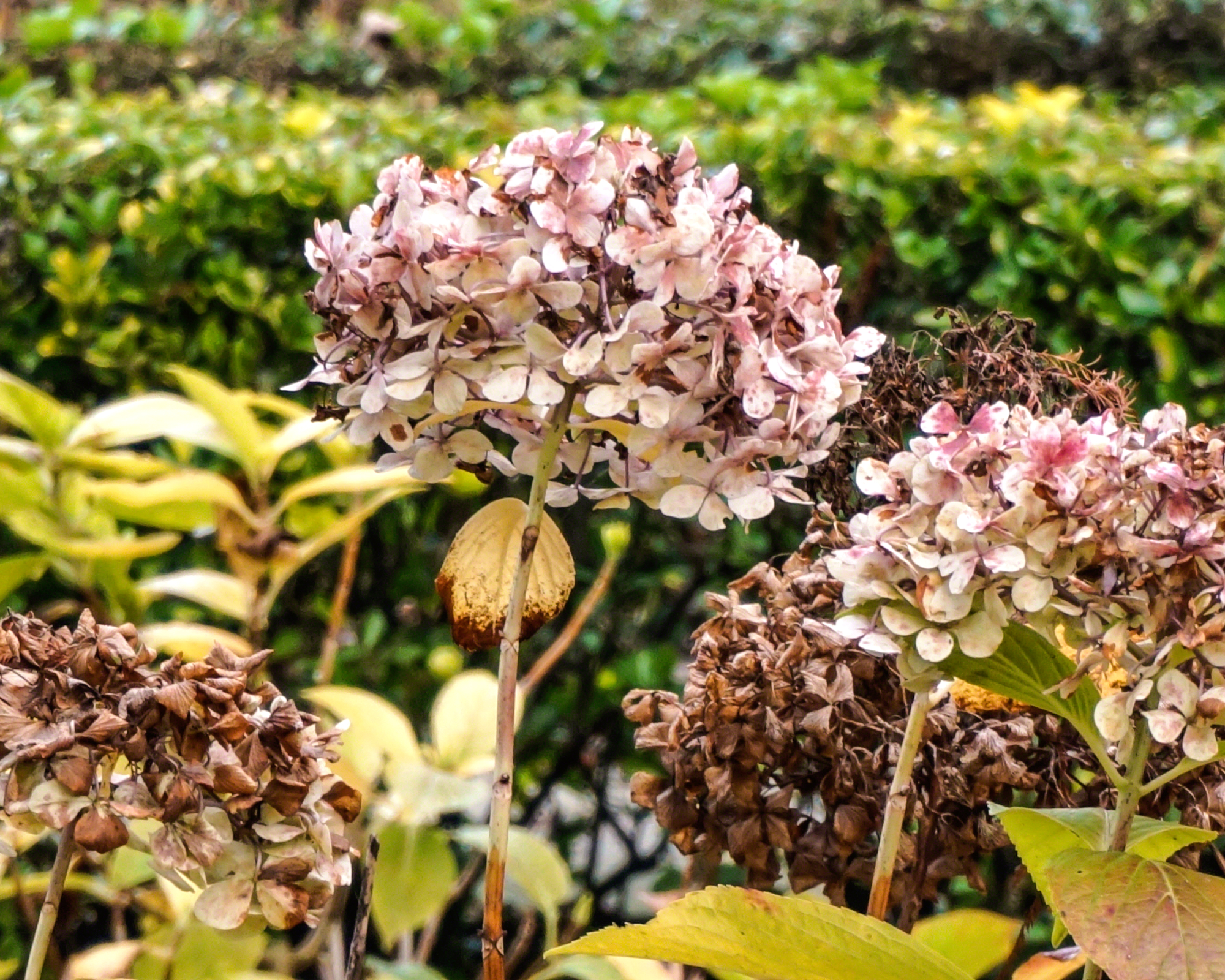
If your hydrangea’s leaves are crisping up with brown edges or the flowers are drooping, underwatering might be the culprit.
Sign up for the Gardening Know How newsletter today and receive a free copy of our e-book "How to Grow Delicious Tomatoes".
Mophead and panicle hydrangea varieties with their shallow roots feel this one the most, especially when the sun’s beating down in peak summer or right after you plant them. It’s not a death sentence if you catch it, but let it go too long and you could lose the plant.
The fix is simple, though. Check the soil every day by sticking your finger in about an inch (2.5 cm). If it’s dry, water hydrangeas at the base using your hose or a drip irrigation system like this one from Amazon, aiming for 1-2 inches (2.5-5 cm) of water a week, a little more if it’s scorching heat. For newly planted shrubs, water them 2-3 times a week until they settle in. Then toss some bark mulch around the roots to hold moisture in.
2. Overwatering
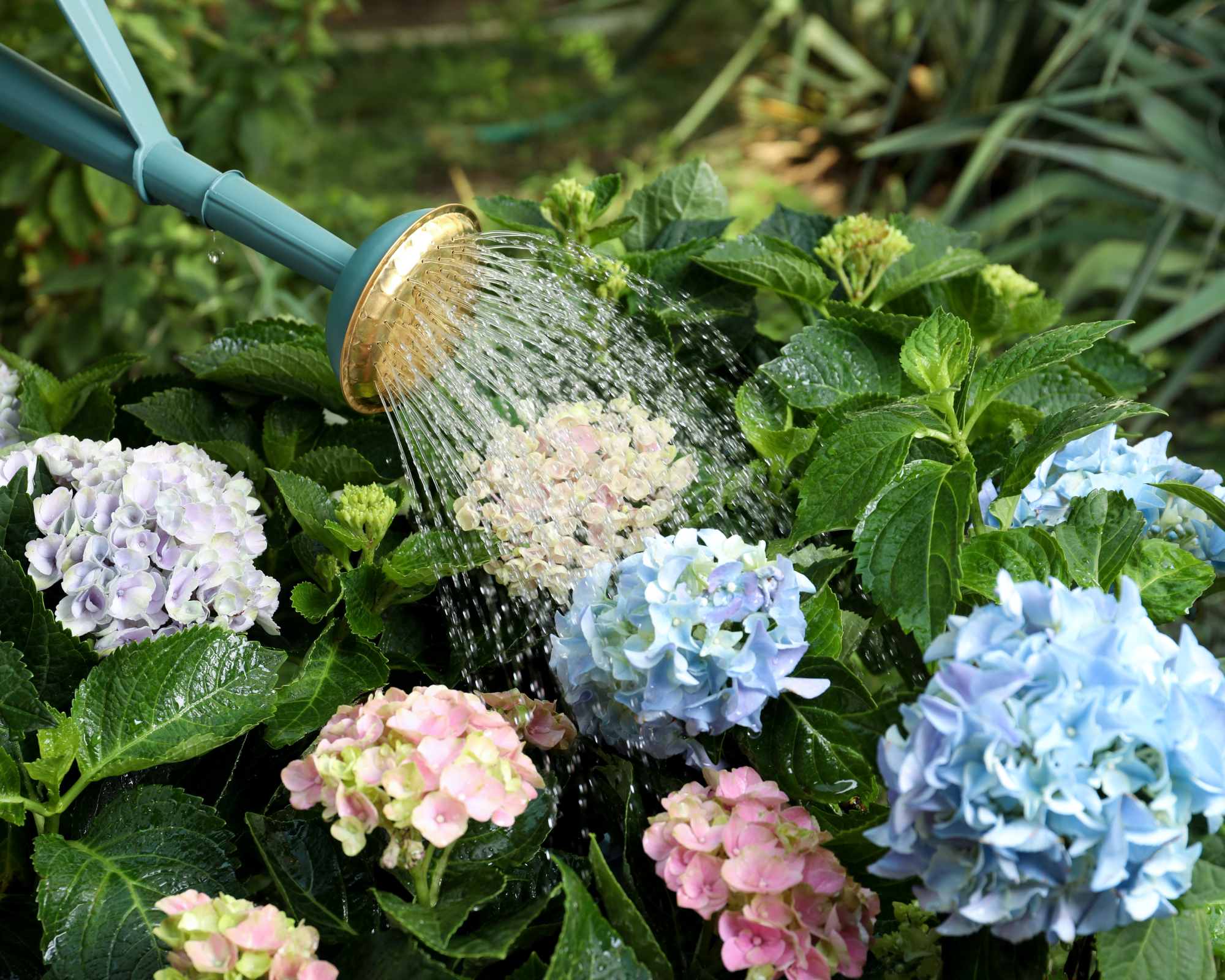
When leaves turn brown and mushy, overwatering could be the cause. When you overwater, you are essentially drowning your hydrangea. Bigleaf and smooth hydrangeas hate sitting in soggy soil, especially in early summer when their roots are still getting comfy.
This one’s serious. If the roots rot out, it can finish off your shrub, so don’t ignore this problem. Ease up on the water and let the soil dry out a bit. You can test with your finger or grab a moisture meter, like one of these from Amazon.
Boost drainage by mixing in some sand or popping the plant into a raised bed. Only water when the top inch feels dry, and if you have container-grown hydrangeas, be sure they have sufficient drainage holes in their containers. Repot them with fresh soil and snip off any rotten roots to give your plant a fresh start.
3. Too Much Sun
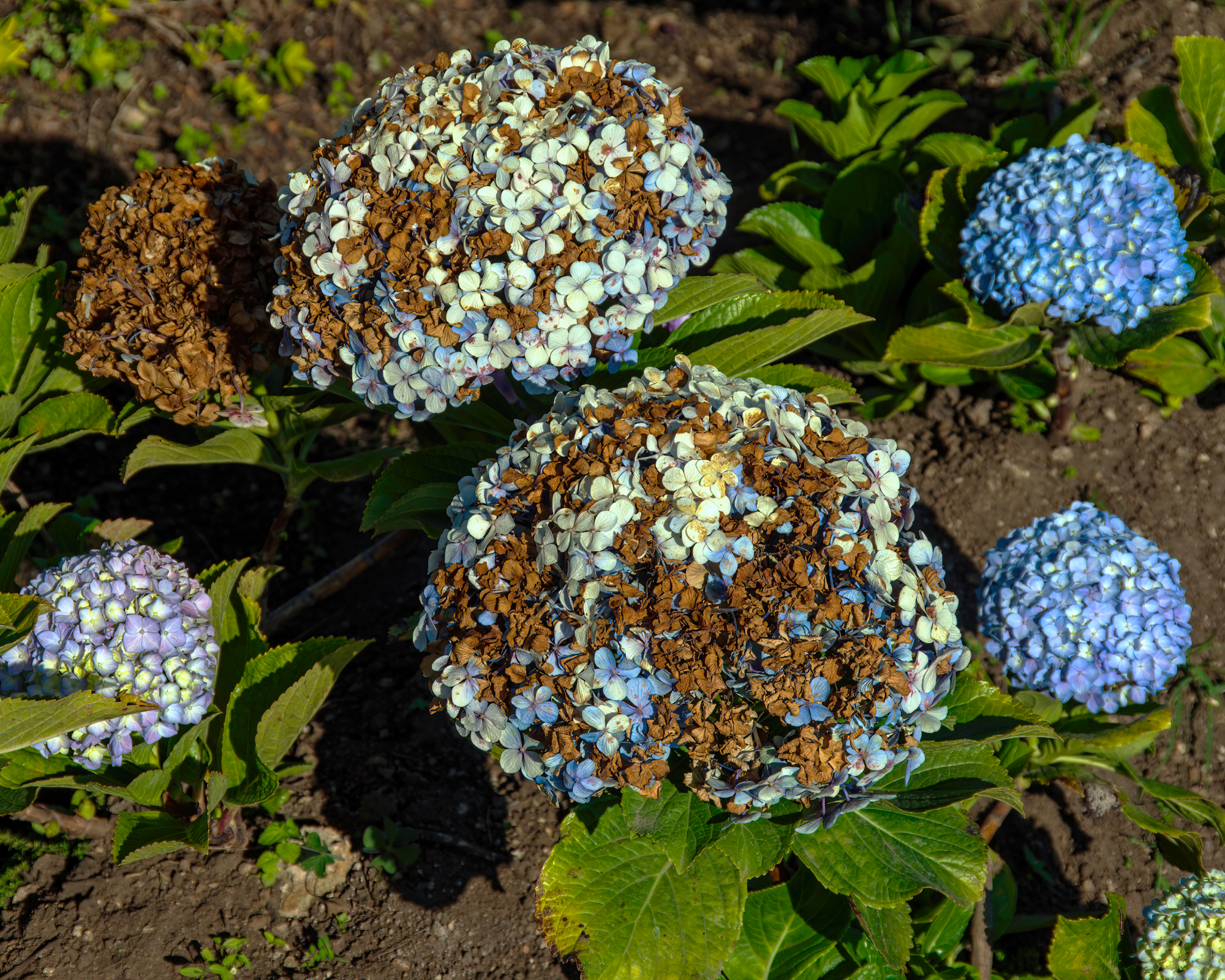
Does your hydrangea have scorched, brown edges on its leaves or flowers that are quickly fading to brown? Too much sun might be cooking your hydrangea. Mopheads and lacecap hydrangeas, with their delicate blooms, really feel the burn, especially when heatwaves hit in mid to late summer.
It’s not a total loss, however. Leaves might drop, but new growth can bounce back if you give shrubs some shade. Shift potted ones to a spot with morning sun and afternoon shade or set up a shade cloth, like this one from Amazon, for in-ground plants.
Bump up watering on hot days and keep an eye out for wilting as your cue to adjust. Older plants toughen up over time, so give them a chance to adapt before you kill them with kindness. Remember, overwatering is even worse than underwatering.
The best answer, is to find the right place to plant your hydrangeas for their specific needs. If you have a sun-soaked yard, don't plant a shade-loving variety. Instead choose full sun hydrangeas, like the beautiful and hardy panicle varieties.
4. Pest Damage
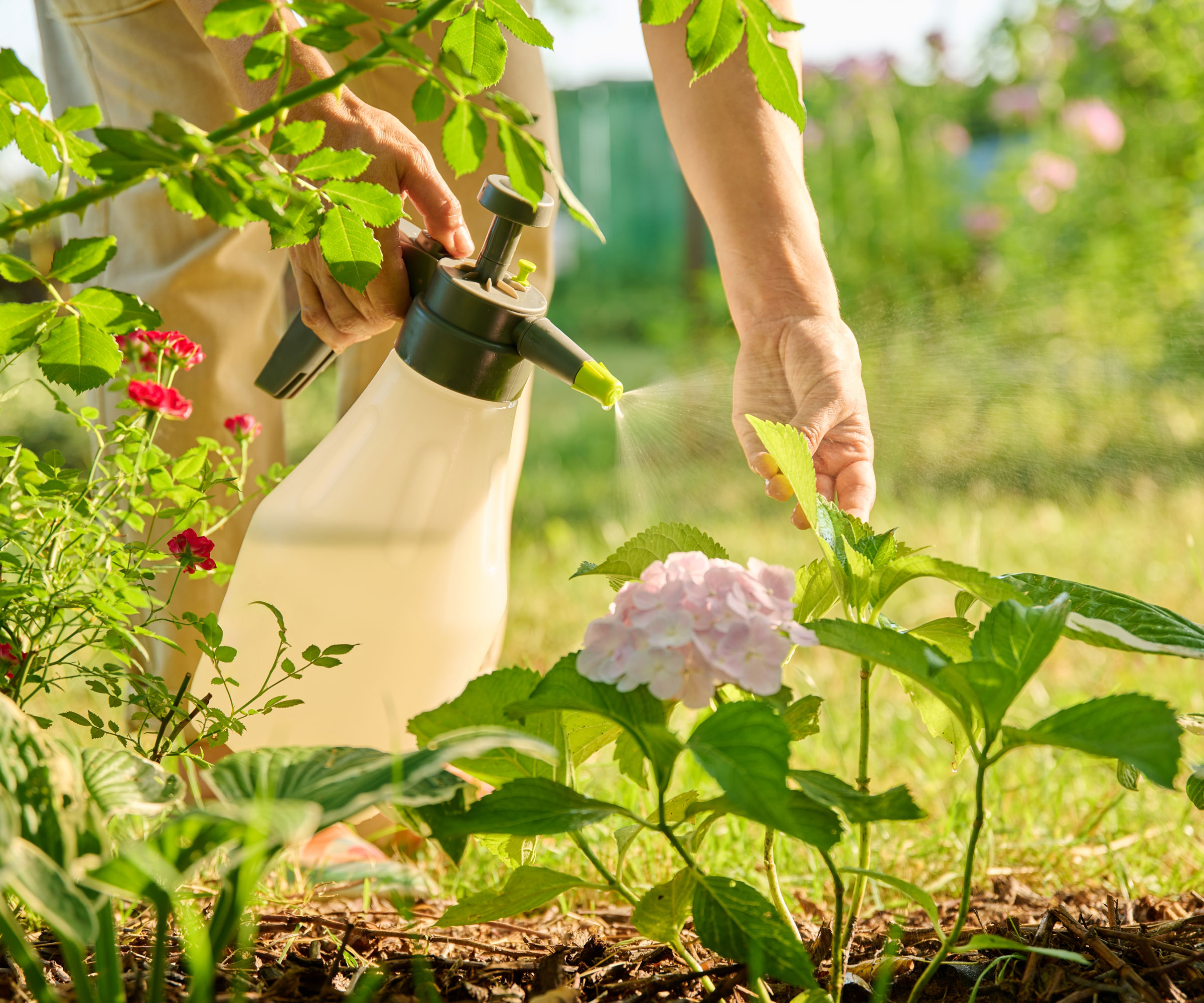
Do you find brown spots or weird webbing on the flowers and leaves of your bushes? Common garden pests, like aphids or spider mites, could be munching away and causing these brown spots on leaves.
Certain types of hydrangeas seem to attract these bugs more and late summer is the time when pest populations spike the most. Brown spots caused by pests can weaken the plant, but rarely kill shrubs if you step in quickly.
Take a close look for sticky residue or tiny webs, especially under leaves. Blast them with a soapy water mix of 1 teaspoon of pure soap per gallon of water. We recommend this Dr. Bronner's Castile Soap from Amazon. Or you can hit pests with neem oil once a week. I like to use a concentrate, like this pure neem oil that I get from Amazon.
Keep the garden tidy to scare off more critters and you’ll have those pests on the run.
5. Fungal Infections

If your hydrangea leaves have brown spots or a powdery coating, but flowers are mostly unharmed then a fungal infection, like anthracnose, might be creeping in.
Bigleaf and oakleaf varieties in humid spots are the usual targets. These types of diseases usually ramp up from late summer into fall when the air is humid. Fungal infection is not usually a killer, but it can spread if you don’t act.
Prune off any spotted leaves and toss them, but don’t compost them. This will spread the disease to other plants when you use the compost. Water plants at the base to keep foliage dry. If the problem continues to worsen, spray shrubs with a natural homemade fungicide or a copper fungicide, like this one from Amazon. You can also prune bushes to let air flow through and cut down on that funky fungal growth.
6. Transplant Shock
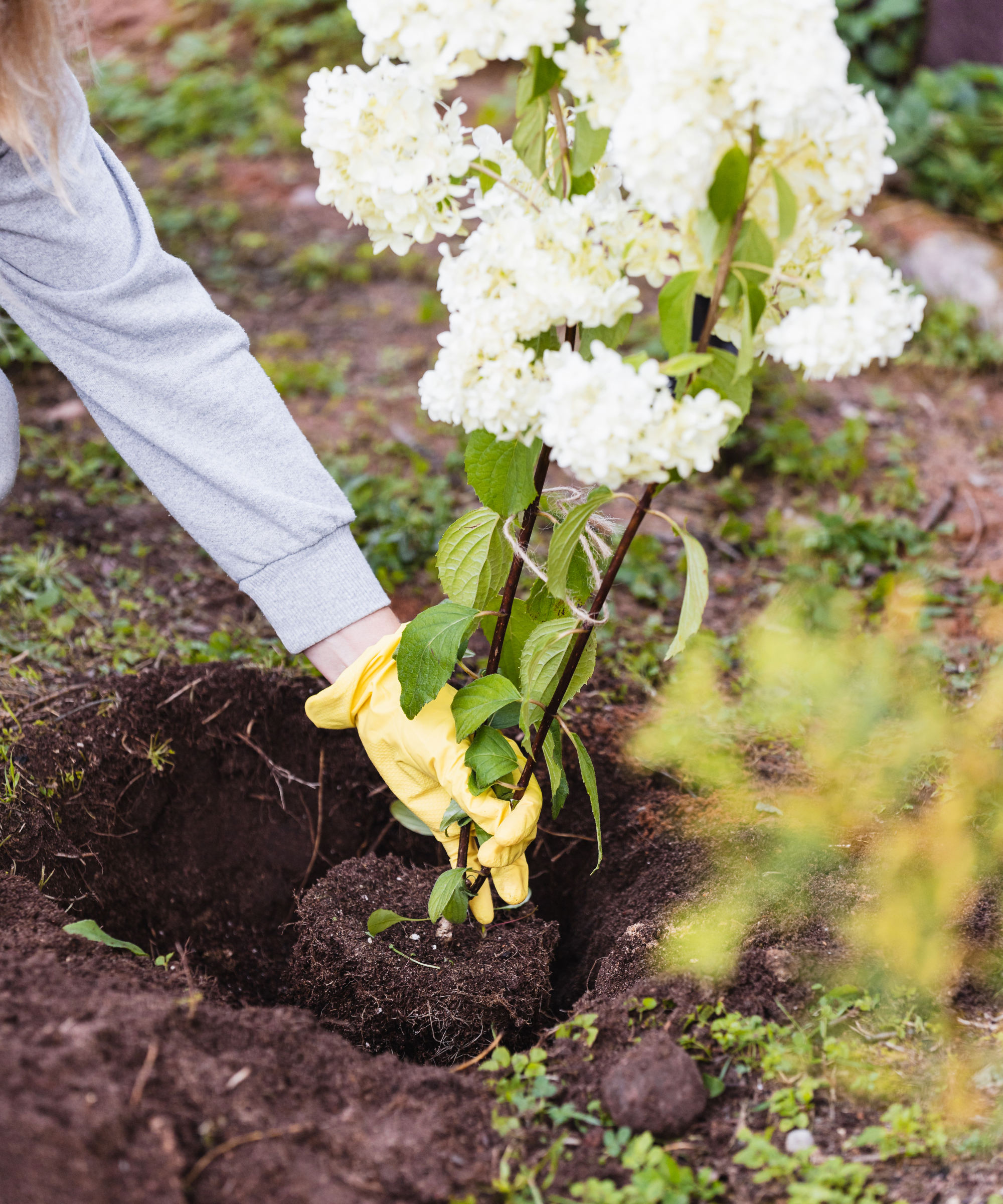
Did brown, wilting leaves or droopy flowers appear after transplanting your hydrangea? Then it's likely that transplant shock is the cause. Especially if the browning started right after moving or planting your hydrangea. Luckily, transplant shock is not a big deal if you handle it right. Shrubs will pull through, if you have some patience.
Water shrubs deeply before and after transplanting them and keep soil moist for a few weeks. Throw a shade cloth, like this one from Amazon, over your shrub for a couple days to ease the stress and try to avoid summer moves, if you can. Fall or spring is easier on them. Give those roots time to settle and you’ll see a comeback.
It does feel terrible to find your hydrangea turning brown, but these fixes can pull shrubs back from the brink if you manage to jump on the problem quickly. Whether it’s water, sun, or bugs, take care of the cause of the browning and you’ll have those shrubs looking lush again in no time.

Tyler’s passion began with indoor gardening and deepened as he studied plant-fungi interactions in controlled settings. With a microbiology background focused on fungi, he’s spent over a decade solving tough and intricate gardening problems. After spinal injuries and brain surgery, Tyler’s approach to gardening changed. It became less about the hobby and more about recovery and adapting to physical limits. His growing success shows that disability doesn’t have to stop you from your goals.